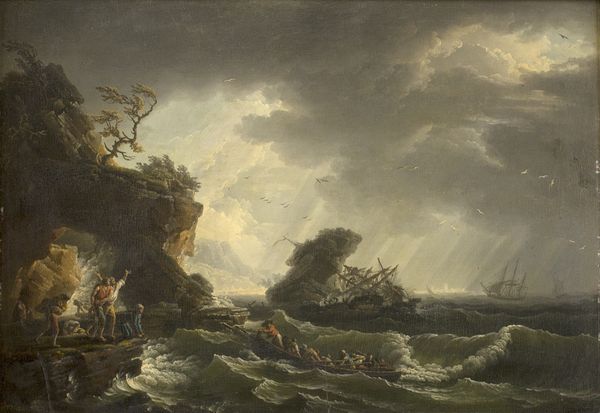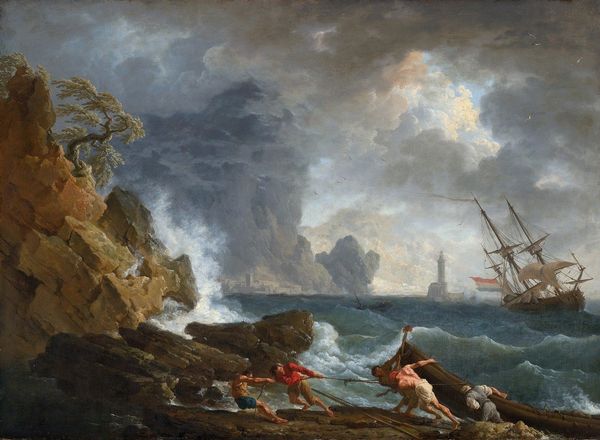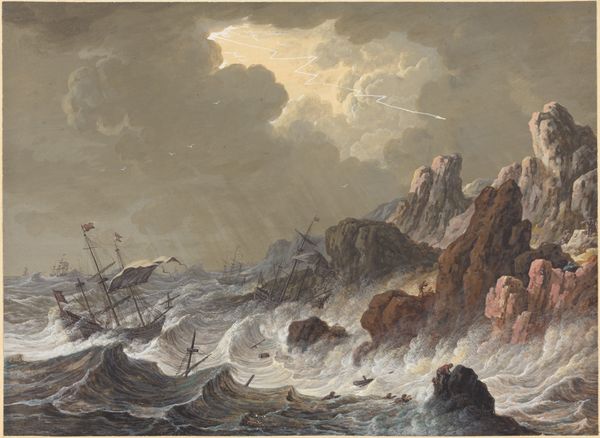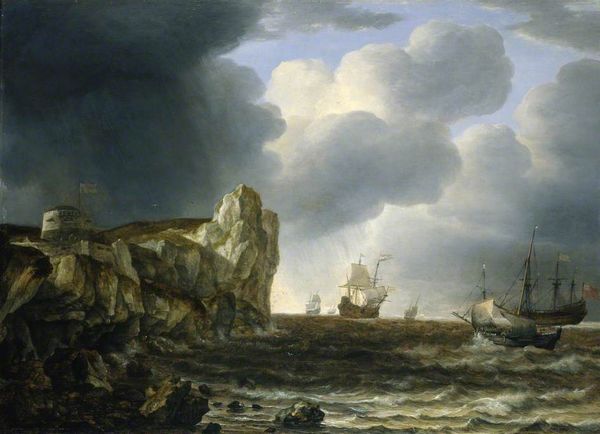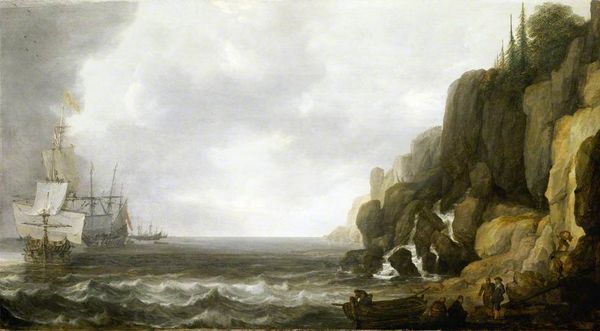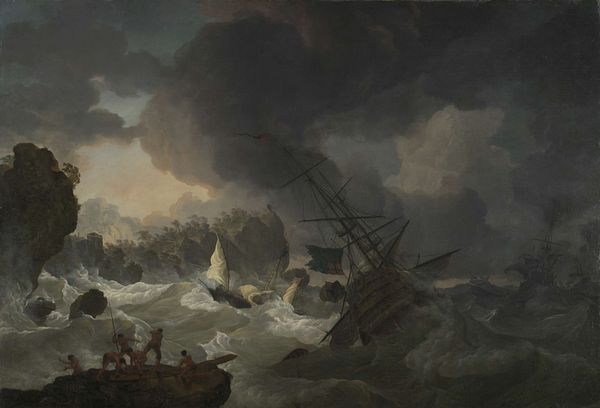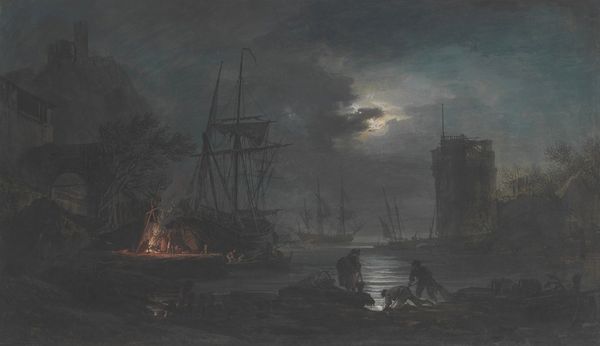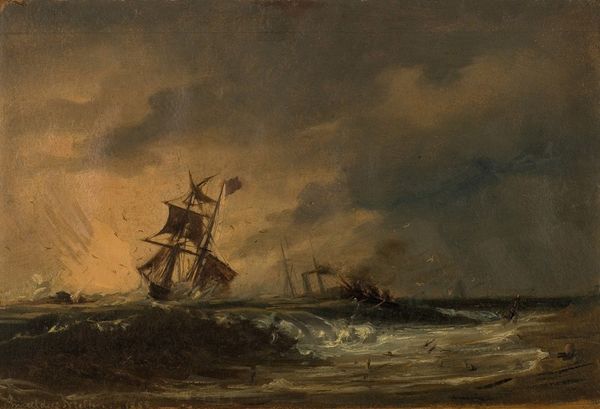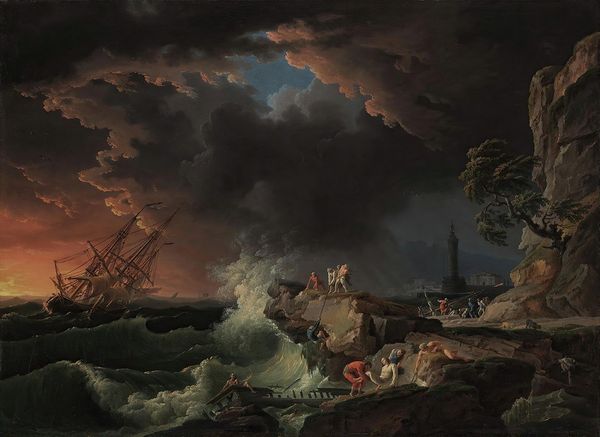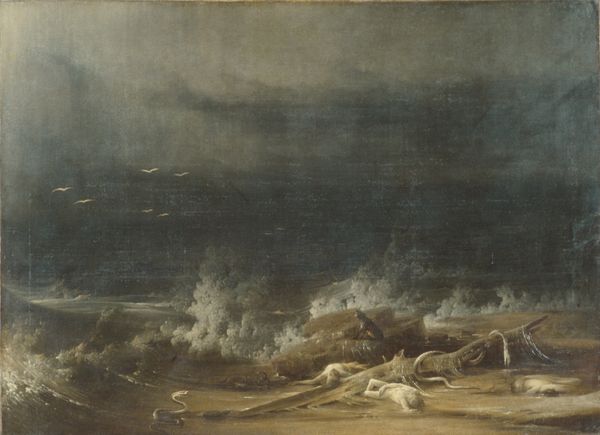
painting, oil-paint
#
narrative-art
#
baroque
#
painting
#
oil-paint
#
landscape
#
romanticism
#
cityscape
#
history-painting
#
sublime
#
realism
Copyright: Public Domain: Artvee
Curator: Immediately, a sense of dread washes over me. It's like stepping into a nightmare painted with strokes of charcoal and a whisper of hope. Editor: Well, let's not get swallowed by the tempest just yet. This is "Storm" by Claude-Joseph Vernet. Vernet, a master of the marine painting, captured more than just the drama of the sea; he explored its impact on humanity, or at least, the tiny little representations of humanity we see scrambling around here. Curator: True, they are wonderfully tiny. Do you think he painted the storm first and added them afterwards, like ornaments? It's as if the people are decorations amidst the sublime power of nature, insignificant and fragile. The boat pitched at such an angle. That poor soul on the rocks... it’s thrilling, but there's an ache here too. Editor: Exactly. Vernet worked at a time when the concept of the "sublime" was captivating intellectuals and artists. The sublime, in essence, is the feeling of awe mixed with terror that one experiences in the face of overwhelming nature. The Romanticism! And you see how Vernet stages it? The crumbling ships, the dramatic, grey sky. Curator: But it’s so seductive, right? I’m frightened but still want to jump in there. Do you think it has anything to say about what makes a state strong – whether those buildings on the point can bear the impact of the sea? Editor: Yes, a relevant point. Vernet received commissions from royal families across Europe, in the age of empires and revolution. His works like "Storm" can be seen as a metaphor for political upheaval and social change, perhaps suggesting both the fragility and resilience of societies facing monumental challenges. The crumbling edifice versus the enduring stone, the individual against fate. Curator: An appropriate topic for conversation given, well, pretty much every year in recorded history! I now recognize I enjoy the terror because of the warm and comfortable building I am standing in, looking at it from the safety of time. Editor: Indeed. Art often grants us that safe distance to contemplate the storm. "Storm," it seems, continues to evoke questions about our place in a world shaped by forces beyond our control. It is the role of our public museums and collections, after all, to serve as this contemplative space. Curator: And remind us we need umbrellas... metaphorically and literally!
Comments
No comments
Be the first to comment and join the conversation on the ultimate creative platform.
